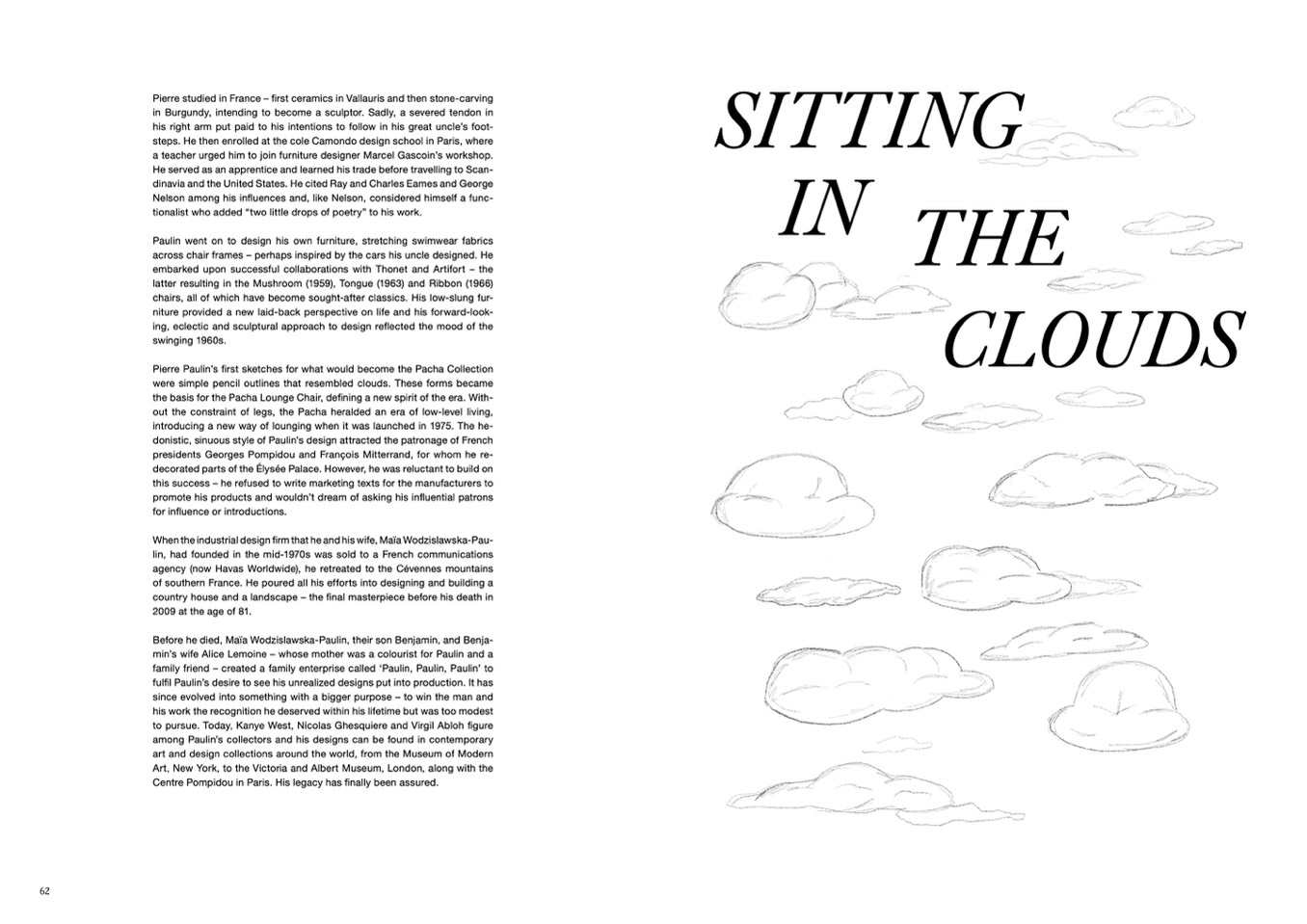
Pierre studied in France – first ceramics in Vallauris and then stone-carving
in Burgundy, intending to become a sculptor. Sadly, a severed tendon in
his right arm put paid to his intentions to follow in his great uncle’s foot-
steps. He then enrolled at the cole Camondo design school in Paris, where
a teacher urged him to join furniture designer Marcel Gascoin’s workshop.
He served as an apprentice and learned his trade before travelling to Scan-
dinavia and the United States. He cited Ray and Charles Eames and George
Nelson among his influences and, like Nelson, considered himself a func-
tionalist who added “two little drops of poetry” to his work.
Paulin went on to design his own furniture, stretching swimwear fabrics
across chair frames – perhaps inspired by the cars his uncle designed. He
embarked upon successful collaborations with Thonet and Artifort – the
latter resulting in the Mushroom (1959), Tongue (1963) and Ribbon (1966)
chairs, all of which have become sought-after classics. His low-slung fur-
niture provided a new laid-back perspective on life and his forward-look-
ing, eclectic and sculptural approach to design reflected the mood of the
swinging 1960s.
Pierre Paulin’s first sketches for what would become the Pacha Collection
were simple pencil outlines that resembled clouds. These forms became
the basis for the Pacha Lounge Chair, defining a new spirit of the era. With-
out the constraint of legs, the Pacha heralded an era of low-level living,
introducing a new way of lounging when it was launched in 1975. The he-
donistic, sinuous style of Paulin’s design attracted the patronage of French
presidents Georges Pompidou and François Mitterrand, for whom he re-
decorated parts of the Élysée Palace. However, he was reluctant to build on
this success – he refused to write marketing texts for the manufacturers to
promote his products and wouldn’t dream of asking his influential patrons
for influence or introductions.
When the industrial design firm that he and his wife, Maïa Wodzislawska-Pau-
lin, had founded in the mid-1970s was sold to a French communications
agency (now Havas Worldwide), he retreated to the Cévennes mountains
of southern France. He poured all his efforts into designing and building a
country house and a landscape – the final masterpiece before his death in
2009 at the age of 81.
Before he died, Maïa Wodzislawska-Paulin, their son Benjamin, and Benja-
min’s wife Alice Lemoine – whose mother was a colourist for Paulin and a
family friend – created a family enterprise called ‘Paulin, Paulin, Paulin’ to
fulfil Paulin’s desire to see his unrealized designs put into production. It has
since evolved into something with a bigger purpose – to win the man and
his work the recognition he deserved within his lifetime but was too modest
to pursue. Today, Kanye West, Nicolas Ghesquiere and Virgil Abloh figure
among Paulin’s collectors and his designs can be found in contemporary
art and design collections around the world, from the Museum of Modern
Art, New York, to the Victoria and Albert Museum, London, along with the
Centre Pompidou in Paris. His legacy has finally been assured.
SITTING
IN
CLOUDS
THE
62

